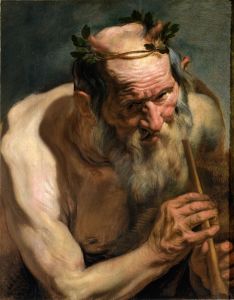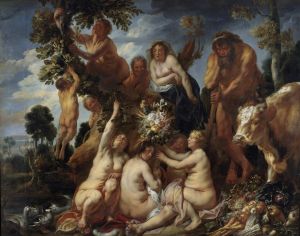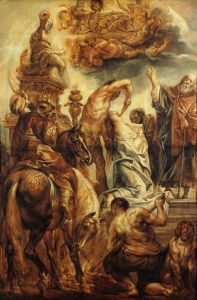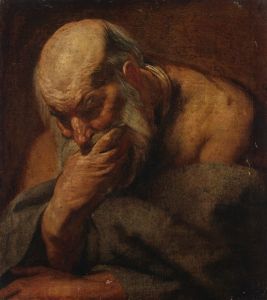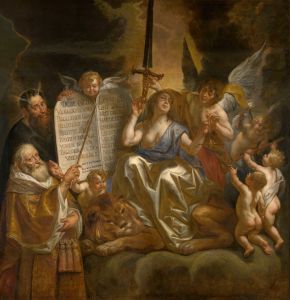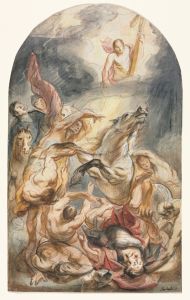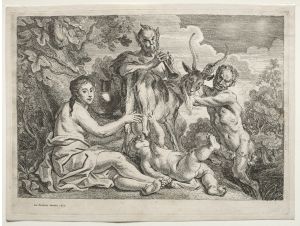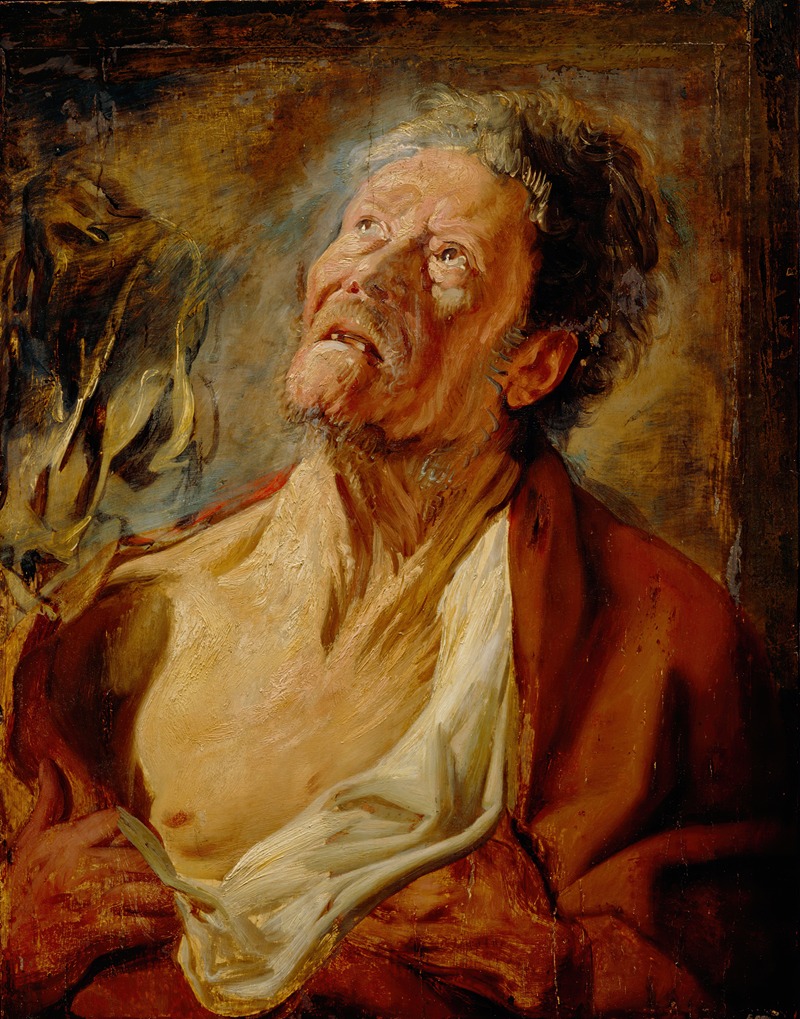
Job
A hand-painted replica of Jacob Jordaens’s masterpiece Job, meticulously crafted by professional artists to capture the true essence of the original. Each piece is created with museum-quality canvas and rare mineral pigments, carefully painted by experienced artists with delicate brushstrokes and rich, layered colors to perfectly recreate the texture of the original artwork. Unlike machine-printed reproductions, this hand-painted version brings the painting to life, infused with the artist’s emotions and skill in every stroke. Whether for personal collection or home decoration, it instantly elevates the artistic atmosphere of any space.
Jacob Jordaens was a prominent Flemish Baroque painter, known for his vibrant compositions and mastery of color and light. He was a contemporary of Peter Paul Rubens and Anthony van Dyck, and like them, he played a significant role in the development of Baroque art in the Southern Netherlands. Jordaens is particularly noted for his genre scenes, religious works, and mythological paintings.
One of the subjects Jordaens explored in his work was the biblical story of Job. The Book of Job is a part of the Hebrew Bible and the Christian Old Testament, and it tells the story of Job, a man who is tested by God through a series of severe trials. Despite his suffering, Job remains faithful to God, and his story is often interpreted as a lesson in patience, faith, and perseverance.
Jordaens' depiction of Job is consistent with his style, characterized by dynamic compositions and expressive figures. While specific details about a painting titled "Job" by Jacob Jordaens are scarce, it is known that Jordaens often infused his religious paintings with a sense of humanity and emotion, making the biblical narratives accessible and relatable to viewers of his time. His works typically feature robust figures, dramatic use of light and shadow, and a rich color palette, all of which serve to heighten the emotional impact of the scenes he portrayed.
In his religious paintings, Jordaens was known for his ability to convey complex theological themes through vivid imagery and compelling characterizations. His interpretation of Job would likely have emphasized the human aspects of the story, focusing on Job's suffering and endurance, and perhaps highlighting the moral and spiritual lessons inherent in the narrative.
Jordaens' work was deeply influenced by his Flemish heritage and the artistic environment of Antwerp, where he spent most of his life. He was also influenced by the works of Rubens, with whom he collaborated on several occasions. Jordaens' paintings often reflect the Baroque interest in movement, emotion, and the dramatic interplay of light and shadow, elements that would have been well-suited to depicting the trials and tribulations of Job.
While specific information about a painting titled "Job" by Jacob Jordaens is limited, his body of work as a whole demonstrates his skill in rendering biblical themes with emotional depth and artistic flair. Jordaens' paintings continue to be celebrated for their dynamic compositions and the way they capture the essence of the human experience, making timeless stories resonate with audiences across the centuries.





